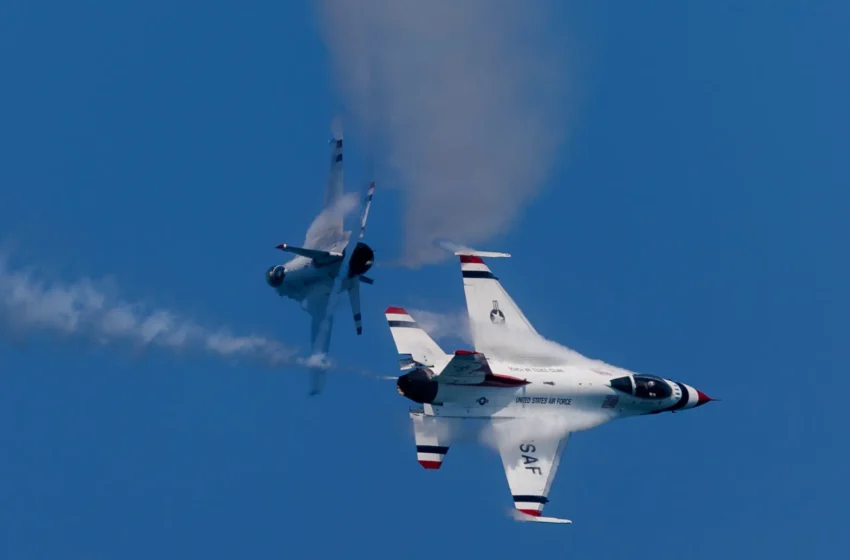Going for 2025 Chicago Air & Water Show? Here are key things you must note

Going for 2025 Chicago Air & Water Show? Here are key things you must note
Chicago’s skies are about to roar and the lakefront will be alive with acrobatics, parachute jumps, and daring water rescues. The 2025 Chicago Air & Water Show isn’t just an event — it’s an experience, a summer tradition that draws over a million spectators every year. Whether you’re a first-timer or a seasoned attendee, here’s your complete guide to making the most of this jaw-dropping weekend.
When to Catch the Action
-
Rehearsals: Friday, August 15
-
Main Show: Saturday, August 16 & Sunday, August 17
-
Time: 10:30 a.m. – 3:00 p.m. (Gates open at 6:00 a.m. for early birds)
Best Places to Watch
The show is visible from much of Chicago’s lakefront, but the epicenter is:
-
North Avenue Beach (1600 N. Lake Shore Drive) — best for both air and water views.
Other great spots:
-
Ohio Street Beach
-
Oak Street Beach
-
Lakefront trail from Fullerton Avenue to Oak Street
-
Nearby parks for a less crowded, family-friendly vibe
Getting There
Driving: No public parking at North Avenue Beach. Book spots in advance at Millennium Garages or through SpotHero — expect to walk or bike the final stretch.
Public Transit:
-
CTA: Take the Red Line to Chicago/State or Clark/Division, then walk east. No. 72 bus rerouted.
-
Metra: Extra weekend service. From Union Station or Millennium Park Station, take CTA’s No. 151 bus.
Biking: Welcome at the beach. Closest Divvy station: DuSable Lake Shore Drive & North Boulevard.
Who’s Performing
Military Teams:
-
U.S. Air Force Thunderbirds – iconic F-16 precision flying
-
U.S. Army Golden Knights parachute team
-
C-17 Globemaster III, KC-135 Stratotanker, MV-22 Osprey
-
U.S. Coast Guard air and water rescue demos
Civilian Flyers:
-
Aerobatic daredevils Kevin Coleman, Susan Dacy, Bill Stein, and more
-
Chicago Police & Fire Department helicopters and water rescue units
What to Bring
Pack:
-
Binoculars
-
Water bottles
-
Chairs/blankets
-
Sunglasses & sunscreen
-
Earplugs for kids or sensitive ears
Leave at Home:
-
Alcohol, fireworks, drones
-
Grills, tents, kites, flagpoles
-
Pets (service animals OK)
Security note: All bags will be checked.
Weather & Safety Tips
-
Forecast: Hot and humid — highs upper 80s–90s, heat index near or above 100°F. Slight storm risk on Sunday.
-
Rain Plan: Delays or shortened performances possible.
-
Shelter: Nearby underpasses and pedways provide cover during storms.
Bonus for Hardcore Fans
-
Plane Spotting: Watch takeoffs & landings at Gary/Chicago International Airport ($20 per vehicle).
-
Live Commentary: WBBM 780 AM / 105.9 FM. Audio description via Zoom for visually impaired visitors.
-
Safety Markers: Look for green/white pole markers to share your location with 911 or friends.
Cost to Attend
Admission: Completely free — the largest free event of its kind in the U.S.
Some Restrictions Apply
According to the website, “the FAA has issued flight restrictions for the airspace around the Air and Water Show. The restrictions will take place on Thursday from 10 a.m. until noon and then again from 1:30-5 p.m. Then from Friday through Sunday, they will be in effect from 10 a.m. until 3:30 p.m. each day. Unauthorized drones or unmanned aircraft systems will be prohibited to fly within the TFR without an approved FAA Waiver.”
A Brief History of the Chicago Air & Water Show
The Chicago Air & Water Show is one of the city’s most iconic summer traditions, drawing millions to the shores of Lake Michigan each August. What began as a modest community event in 1959 has grown into the largest free admission air and water exhibition in the United States.
The Early Years (1959–1960s)
The show started with a budget of just $88, organized by the Chicago Park District’s Lakefront Director Al Benedict. The debut featured only a Coast Guard rescue demonstration, water skiers, and a small air show from local pilots. Despite its simplicity, the event drew enough attention to become an annual occurrence.
Expansion and Popularity (1970s–1980s)
Through the 1970s and 1980s, the show began to attract military demonstration teams, including the U.S. Navy Blue Angels and the U.S. Air Force Thunderbirds. Crowds grew steadily as the event became a staple of Chicago’s summer calendar, offering high-energy aerobatic performances and daring water stunts.
The Modern Era (1990s–Present)
By the 1990s, the Chicago Air & Water Show had transformed into a world-class spectacle, featuring top civilian stunt pilots, parachute teams, and military aircraft. Performances expanded to include the U.S. Army Golden Knights Parachute Team, the U.S. Coast Guard, and appearances by vintage warbirds. The event now draws over two million spectators annually, making it one of the largest gatherings of its kind.
Notable Moments
-
1960s – Introduction of jet-powered aircraft displays.
-
1994 – First simultaneous appearance of both the Blue Angels and Thunderbirds.
-
2015 – Commemorated the 75th anniversary of the U.S. Navy Blue Angels.
-
2020 – Show canceled for the first time due to COVID-19, but returned the following year with health safety measures.
Cultural Impact
The Chicago Air & Water Show is more than entertainment—it’s a symbol of national pride, military excellence, and Chicago’s vibrant lakefront culture. It continues to bring together generations of families, aviation enthusiasts, and visitors from across the country, boosting tourism and showcasing the city’s skyline against a backdrop of roaring jets and shimmering waters.

